Effective B2B marketing is challenging to get right. Between creative demands, budget limits, and channel decisions, marketers have a lot to juggle when developing their marketing strategy.
However, the biggest determinant of effective marketing is your audience. That includes whether you understand your audience in the first place and how you communicate with them from there.
The crux?
If you’re not properly targeting your buyer persona, your promotions and advertisements will likely fall flat. In fact, you might as well not be marketing at all.
While similar in some respects, marketing to businesses is not the same as marketing to individual consumers. That’s why an entirely different marketing method — B2B marketing — exists, and that’s why I built this guide.
By the end of this article, you’ll better understand B2B marketing, the most effective B2B marketing strategies, and how you can tap into and convert your business audience.
And if you already know all that? I also share data-backed trends you can expect to see in the B2B space in 2024. For this section, I’ve spoken to some incredible B2B marketers who share their expert insights and tips.
Table of Contents
What is B2B marketing?
B2B stands for “business-to-business,” which is a business model where businesses sell products and services to other companies instead of consumers. The purpose of B2B marketing is to make other businesses familiar with your brand name, show the value of your product or service, and convert them into customers.
HubSpot is an example of a company that engages in B2B marketing. HubSpot’s customers are other businesses, not individual consumers. Therefore, you can classify all of our marketing efforts as B2B.
If you’re a new marketer in the B2B space or a small B2B business owner learning the ropes, B2B marketing can seem tricky at first.
But don’t worry — you’ll soon learn it’s not so different from typical consumer marketing, and I’ll go over everything you need to know so you can create an effective B2B marketing strategy.
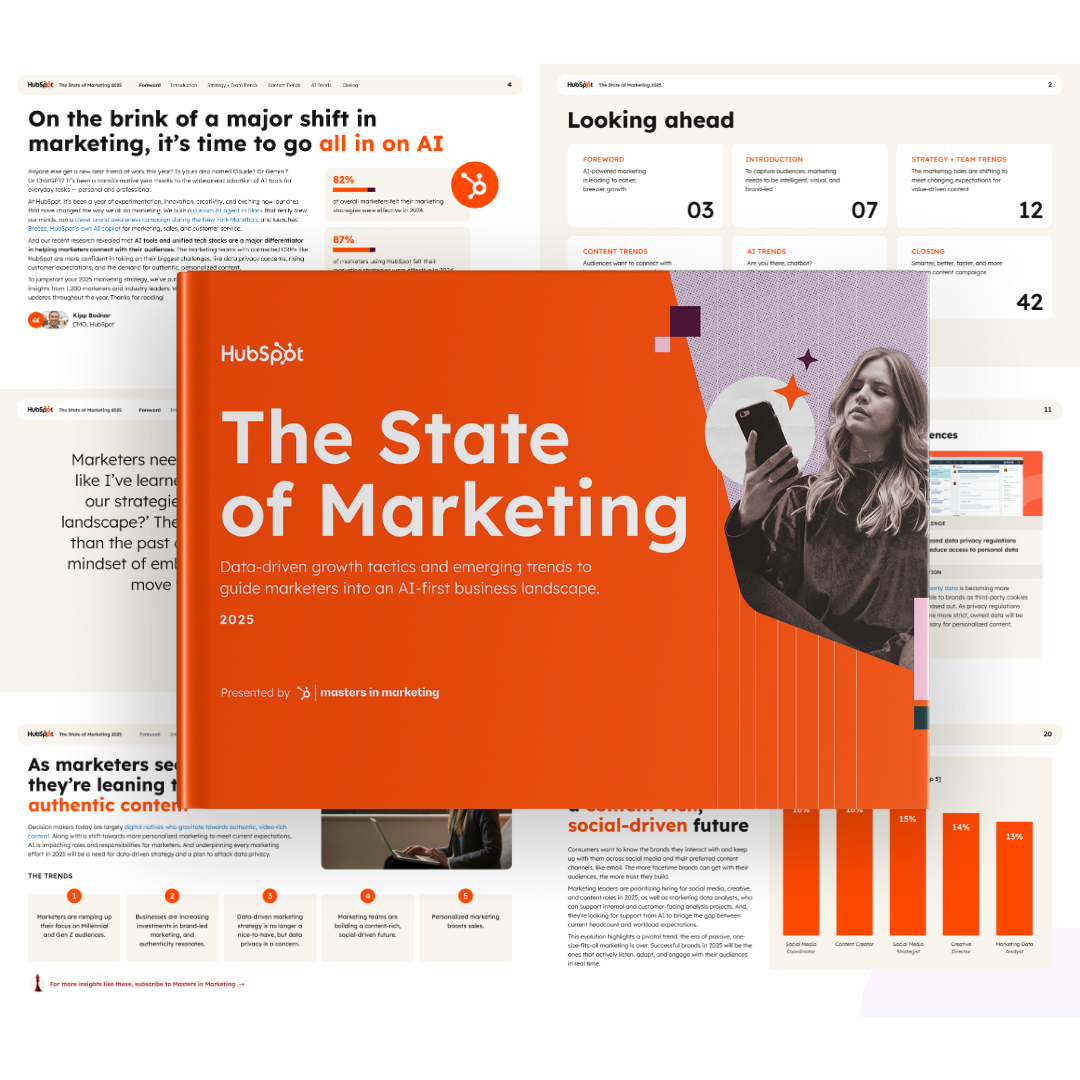
The State of Marketing in 2025
HubSpot's Annual Inbound Marketing Trends Report
- Top Marketing Channels
- AI in Marketing
- Managing Privacy
- The Future of Marketing
Download Free
All fields are required.

B2B vs. B2C Marketing
B2B and B2C (business-to-consumer) marketing are very different.
B2B and B2C marketing differ in their respective strategies and applications, as well as in their audiences and how they communicate with them.
B2B marketing targets the needs, interests, and challenges of individuals who make purchases on behalf of, or for, their organization (rather than for themselves), thus making the organization the customer.
Here are a few examples of B2B companies:
- A coworking space that leases office spaces to remote teams and freelancers (like Spaces).
- An on-demand order fulfillment, warehousing, and screen printing service (like Printful).
- A marketing software company that sells social media management tools, lead generation software, and other marketing tools to businesses and organizations (like HubSpot).
B2C marketing targets the needs, interests, and challenges of individual consumers who make purchases on behalf of, or for, themselves, thus making the individual the customer. Here are a few examples of B2C companies:
- An ecommerce company that sells office supplies to remote or self-employed individuals (like Poppin).
- A store that sells t-shirts and other clothing and accessories (like Target).
- A music platform that sells streaming subscriptions (like Spotify).
For more context, let’s take a look at this chart comparing B2B and B2C customers.
|
For B2B marketing |
For B2C marketing |
|
|
Goal |
Customers are focused on ROI, efficiency, and expertise. |
Customers are seeking deals and entertainment (which means marketing needs to be more fun). |
|
Purchase Motivation |
Customers are driven by logic and financial incentives. |
Customers are driven by emotion. |
|
Drivers |
Customers want to be educated (which is where B2B content marketing comes in). |
Customers appreciate education but don’t always need it to make a purchase decision. |
|
Purchase Process |
Customers like (if not prefer) to work with account managers and salespeople. |
Customers like to make purchases directly. |
|
People Involved in Purchase |
Customers often have to confer with decision-makers and other members of their chain of command before making a purchase decision. |
Customers rarely need to confer with others before making a purchase decision. |
|
Purchase Purpose |
Customers make purchases for long-term solutions, resulting in a longer sales cycle, longer contracts, and longer relationships with companies. |
Customers aren’t necessarily looking for long-term solutions or long-term relationships. |
As much as they differ, B2B and B2C companies intersect in many ways. While Poppin sells office supplies to remote or self-employed individuals, they also design corporate office spaces and branded supplies.
On the flip side, Printful offers order fulfillment and warehousing to businesses. They also fill ecommerce printing orders for individuals.
Also, as distinct as the B2B and B2C marketing audiences can be, B2B marketers can always learn from B2C campaigns, too.
I can tell you from experience that there are nuances to consider. For example, logic and financial incentives may drive B2B purchase motivation.
However, anyone who understands sales — whether for B2B or B2C — knows there are typically at least some emotions at play behind any purchase.
In B2B, that could be fear (i.e., are we falling behind our competitors?) or frustration (i.e., our current systems and processes are slowing us down).
It could also be a feeling of hope (i.e., if we invest in this new software, we can become more efficient and stay ahead of our competitors).
B2B Marketing Strategies
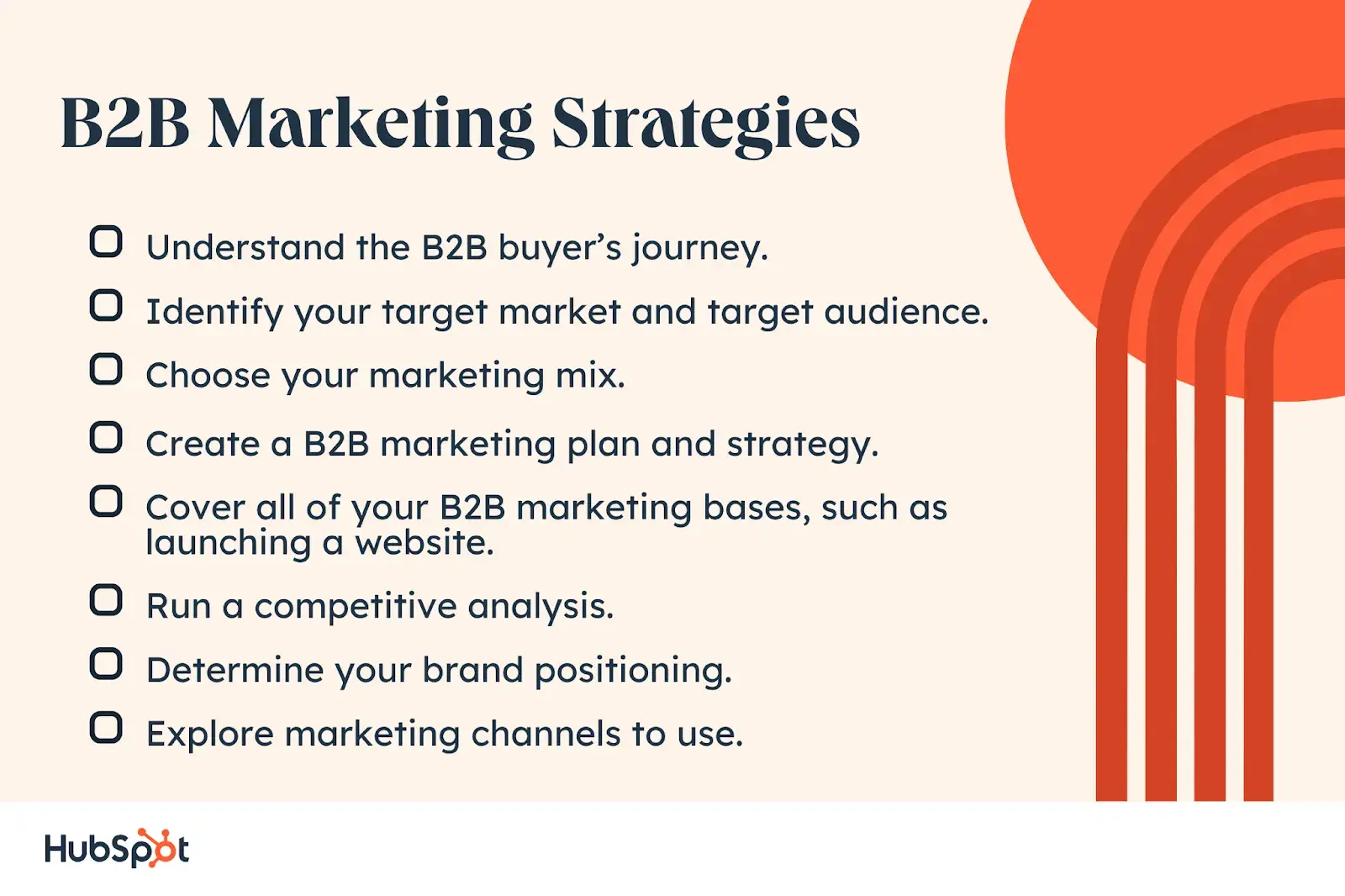
As I said above, marketing depends on its audience. While B2B and B2C marketing vary, not every piece of B2B marketing material is alike, either.
In this section, I’ll cover various B2B marketing strategies you can implement to reach your specific business audience.
Some of these strategies are preparatory, such as identifying your audience, while others are ready to be executed, such as creating a B2B website.
1. Understand the B2B buyer’s journey.
Before we dive into actual strategies you can implement, you need to understand the B2B buyer’s journey.
This information will help you create and implement marketing strategies that meet prospects at every stage of their purchase process.
Because of the higher price point of B2B products, B2B sales cycles tend to be a lot longer than B2C cycles.
Nurturing these prospects via marketing takes a similarly long time, too. That means you must use specific tactics at every stage to drive them toward a purchase decision or a demo request.
In other words: B2B marketing is not as easy as setting up ads on Instagram and hoping for clicks. (I wish! That can work, however, in conjunction with other strategies.)

The B2B buyer’s journey is divided into three stages:
- Awareness Stage. The prospect has become aware of a problem and begins educating themselves.
- Consideration Stage. The prospect researches solutions for their new problem.
- Decision Stage. The prospect is ready to make a purchase or formally begin a buying process.
After understanding the buyer’s journey, take this opportunity to create a customer journey map for your company — or, if you’re a new marketer at a B2B company, ask for one for reference.
A customer journey map is a customized version of the buyer’s journey that shows how your brand interacts with prospects during each phase.
With that information, you can understand which marketing strategies, such as content marketing, will be most effective at each stage.
Pro tip: If you’re working on strategies for marketing your B2B product, use our Ultimate Product Marketing Kit to build your comprehensive plan.
2. Identify your target market and target audience.
Now that you have a strong understanding of the buyer’s journey, it’s time to begin understanding who you’re marketing to specifically.
Who is taking the buyer’s journey and purchasing your products? You get to decide. But it all begins by identifying who they are.
First up, define your target market. For B2B companies, I recommend first identifying your target companies with firmographic data such as:
- Company size (i.e., small, medium, or enterprise).
- Company region or location (i.e., North America, South America, Africa, or specific countries and regions).
- Company industry (i.e., healthcare, fintech, or SaaS).
- Number of employees.
- Revenue.
Then, define your target audience — that is, the specific human prospect who is looking for your brand’s products or services. Remember, you’re not marketing to other companies. You’re marketing to people who work at that company.
You can use demographic and psychographic data to identify individual prospects you’ll be marketing to. This may include their:
- Age.
- Location.
- Gender.
- Education level.
- Job title.
- Behaviors.
- Habits.
- Beliefs.
This information will help you create buyer personas and customer profiles, which in turn will help you understand how they make purchase decisions and which marketing channels they’re more likely to use.
For instance, if you’re targeting an entry-level employee, ages 22-26, at a small business in North America, you can likely use social media to reach them effectively.
Expert Insights
The above should be a starting point. It’s a wonderful starting point, don’t get me wrong! But to really understand your target audience — rather than making educated guesses — you need to speak directly to them.
So, where possible, I’d always recommend interviewing existing customers or collaborating with sales, customer service, or customer success teams (basically any colleague who speaks to customers directly).
That way, you can get accurate insights about motivations and pain points. (At a minimum, you can glean some of this from existing testimonials or reviews.)
I would also see your buyer personas and customer profiles as unfinished, flexible documentation. That means when you discover something noteworthy, you can update the documents to reflect your findings.

The State of Marketing in 2025
HubSpot's Annual Inbound Marketing Trends Report
- Top Marketing Channels
- AI in Marketing
- Managing Privacy
- The Future of Marketing
Download Free
All fields are required.

3. Choose your marketing mix (or the 4 Ps of marketing).
Now that you’re armed with your buyer’s firmographic, demographic, and psychographic information, it’s time to start building a B2B marketing strategy tailored specifically to them.
Start by defining your marketing mix, or the 4 Ps of marketing:
- Product. What product you sell.
- Price. How much the product costs.
- Place. Where the product is sold.
- Promotion. Where customers will find out about the product.
Defining your 4 Ps will help you create a more extensive marketing strategy. It marries all of the information you’ve recently found about your potential customers with the information you already know about your own product.
That will empower you to create a more effective strategy than if you jumped right into tactics and execution.
Featured Resource: Marketing Mix Templates
Click here to download the templates for free.
4. Create a B2B marketing plan and a marketing strategy.
Once you’ve defined your marketing mix, you can dive in even more deeply by creating a marketing plan and a marketing strategy.
A marketing strategy marries market conditions with your company’s goals, and a marketing plan provides an actionable roadmap with specific channels and metrics.
What’s most important is outlining your own company’s summary and target markets, then deciding where you’ll promote your company.
Here’s the thing: It’s all too easy to choose specific strategies, like social media marketing and content marketing, without a strategic approach. That can easily lead to overspending in the wrong areas.
To create a marketing plan and strategy, I recommend starting with a template.
But, as with your buyer personas and customer profiles, you should see your marketing plan and strategy as something that can change. That means when you get more data, and it makes sense to do so, you can pivot your marketing plan and strategy.
Featured Resource: Free Marketing Plan Template
Click here to download HubSpot's free Marketing Plan Template.
By using this template, you can compile all the information you need to choose the right B2B marketing channels for your company.
You’ll be able to lay out your:
- Business summary and initiatives.
- Target market.
- Market strategy.
- Budget.
- Marketing channels.
- Marketing technology.
In this list, we could have easily shared specific marketing tasks you can do, such as creating online content or publishing short videos.
And while these things will likely be a worthy use of your time, it’s more important to spend your time strategizing to minimize marketing costs and increase your ROI.
Strategizing is the core of your B2B marketing strategy — not implementing specific tactics such as blogging or SEO. Those will come later once you have defined the big picture.
5. Cover all of your B2B marketing bases, such as launching a website.
It’s time to dive into the more tactical aspects of your B2B marketing strategy.
That means covering all of your marketing bases. But we don’t want to dive too deeply yet; this is about nailing down the basics.
The “basics” will vary per industry. For instance, in a more traditional vertical, you might rely less on your website and more on industry events.
That said, you want to make your B2B company has covered most of the following things (click on each one for a checklist to run through):
- Launching a website.
- Creating and maintaining your social media profiles.
- Starting an email marketing newsletter.
No matter which B2B industry you’re in, and regardless of your audience type and age, these things will likely benefit you.
Later, we’ll cover specific types of B2B marketing that you can integrate under each of these strategies. But here’s a good introduction:
- Strategies for your website — content marketing, blogging, SEO.
- Strategies for your social media profiles — social media marketing, paid social media, short-form video marketing.
- Strategies for your email marketing newsletter — email marketing, lead nurturing.
- Strategies for industry events and conferences — event marketing, trade show marketing.
Expert Insights
I’ve outlined “B2B marketing bases” above, and as I said, it’s worth implementing each as a starting point. That said, you don’t have to — and arguably shouldn’t if you don’t have the resources/infrastructure — implement them all at once.
Instead, a staggered approach can help you avoid doing everything yet achieving nothing because you’re under-resourced and overwhelmed. It can also help you set up each marketing area as a pillar that supports, rather than hinders, the next.
In practice, this might look like launching your website first. That means you can get a steady stream of blog content in the hopper, and your blog content ops running like a well-oiled machine.
Then, you might introduce social media and focus on sharing a mix of new content and repurposing your existing blog content.
This is exactly what I did as a B2B marketing army of one. (Of course, if you have the resources and infrastructure to start everything at once, that’s a different story.)
It’s also worth noting that if you get up and running with one of these areas, stick at it for an extended period and use best practices while also experimenting.
But it still doesn’t prove fruitful. You don’t have to keep going just because you think you should.
If you don’t have an in-house specialist and you have the budget, it might be worth bringing in outside expertise. Even an hour consultation with a specialist might help you pinpoint how you can improve your approach.
You might also be better served reallocating your budget and resources to what’s working for you rather than what isn’t.
6. Run a competitive analysis.
To choose your specific marketing strategies even more strategically, conduct a competitive analysis.
Scope out the market and see which businesses are marketing to your target audience. Learn what they’re currently doing — do they have a website? A presence on a specific social media platform, such as LinkedIn?
Things to be on the lookout for when inspecting competitors are:
- Competitor product offerings.
- Competitor sales tactics and results.
- Competitor marketing content and social media presence.
Featured Resource: 10 Competitive Analysis Templates
Getting a general overview of these items can help you recognize your competitors’ strengths, weaknesses, opportunities, and threats — otherwise known as a SWOT analysis.
Once you understand where they stand, you can better compete with them and choose the best channels.
If none of your competitors are on Instagram, for instance, then Instagram marketing may not be a good strategy to pursue (or, at least, you should test it out first before investing too many resources in it).
Another thing you should be looking out for is what you can do better than your competitors. Consider how you can stand out, which leads us nicely to brand positioning.
7. Determine your brand positioning.
Next, define your brand positioning in the market.
This statement is the who, when, why, and how of your brand identity — or how your brand is perceived through the eyes of the customer.
This will help you cultivate a consistent brand image, regardless of the marketing channels and tactics you use.
Devise a brand positioning statement that your team and prospective customers can believe in, and you’ll be ready for the next step.
Featured Resource: Positioning Statement Templates
8. Explore marketing channels to use.
By now, you’ve likely run across the different types of marketing channels your competitors use successfully and the channels they haven’t taken advantage of.
You’ve also likely gotten an idea of what you want to do based on your big-picture strategizing so far.
With the previous steps completed, you’re ready to diversify your B2B marketing portfolio and reach the businesses you need to.
Depending on your customer segments and competitor analysis, you can explore channels, strategies, and tools to optimize your leads and customer funnels.
To effectively measure and analyze the success of your marketing efforts across these channels, use HubSpot's Marketing Analytics software. This powerful platform will help you track performance, identify trends, and make data-driven decisions to improve your marketing strategy and drive more sales.
Next up, let’s look at the types of B2B marketing you can implement now that you’ve created your overall strategy.

The State of Marketing in 2025
HubSpot's Annual Inbound Marketing Trends Report
- Top Marketing Channels
- AI in Marketing
- Managing Privacy
- The Future of Marketing
Download Free
All fields are required.

Types of B2B Marketing
The following categories are B2B marketing channels that can connect you to your target audience.
B2B Email Marketing
Email marketing is a tried and true method of reaching both individual consumers and business customers. Most B2B marketers use email — are you one of them?
You should be. Emails lead to engagement, which turns subscribers into leads and then customers.
Unlike B2C customers who respond best to emotions and entertainment, B2B customers look for logic and positive ROI. Essentially, they’re asking themselves, How can your business help my business grow?
Because of this, your email marketing must consistently resonate with your business customers and focus on things that matter to them — like time, money, and resources.
(BUT, that doesn’t mean you shouldn’t also — tactfully, might I add — dig into the emotions that might drive their purchasing decisions.)
Email marketing is also a powerful vehicle for sharing your brand’s content.
Many B2B companies use email newsletters as part of their content marketing program, and the B2B marketers we’ve spoken to say these newsletters are most critical to their content marketing success.
With the constant barrage of emails flooding our inboxes today, it’s more important than ever to create and send out effective marketing emails.
To help you create emails that stand out, you can use HubSpot's AI Email Writer.
B2B Email Marketing Best Practices
- Write enticing subject lines. Think about your email subject lines as a Netflix trailer — if you can’t hook your audience with a two-minute clip (or, in this case, a few dozen characters), don’t expect them to open and watch (or read) the whole thing. We recommend spending almost as much time on your email subject lines as you do on the emails themselves. You can also run an A/B test on your subject lines to see what works best for your audience.
- Stick to one call-to-action (CTA) per email. If you think the number of emails you receive is a lot, take a look at the CTAs in those emails. Some are packed with two, three, and sometimes up to 10 different CTAs. Don’t make this mistake, which can leave your recipients’ heads spinning, asking, “What should I click on first?” and ultimately clicking on nothing. With one CTA per email, you allow your audience to focus on your email content and, ultimately, one action. A welcome reprieve from today’s frequent decision-making and analysis paralysis.
- Segment your email to reach the most relevant audience. Not every email you send will be appropriate for everyone on your list. Your subscribers may be at different stages of the buyer’s journey or be seeking different solutions. That’s where email list segmentation comes into play. Not only does this help you relate to your audience better, but it also gives your emails that personal feel that says, “Hey, I’m listening, and I know what you’d like to see.” Consumers prefer email quality over quantity anytime.
- Make sure your email designs are responsive. Most email users access their inboxes on their phones, and emails that don’t show up correctly on mobile devices are often deleted. Ouch. Don’t let your email be one of those.
- Don’t be afraid of the cold email. As uncomfortable as it is, the right email can convert new customers — like these cold sales email templates, which will help you get your leads’ attention.
Pro tip: You can’t send marketing emails without any recipients — these people make up your lists. There are plenty of easy ways to grow your email list. Begin with opt-in forms on your website homepage, About page, and blog. Check out HubSpot’s Free Form Builder tool to get started.
B2B Digital Marketing
Every business, whether B2B or B2C, should have a digital presence — which consists of paid ads, search engine optimization, a website, and any other place your B2B company is active online.
Let’s explore several tactics that can strengthen your B2B digital marketing strategy.
1. Define your target audience.
A strong B2B digital marketing strategy starts with defining your target audience or buyer persona. This demographic and psychographic information will inform almost every other marketing activity thereafter.
In short, it makes sure your content and digital material are absorbed by the right eyes and ears (and that no resources go to waste on your end).
2. Create your website.
Secondly, digital marketing can’t function without an informative, engaging website. Most buyers visit a website before making a purchase.
Moreover, the typical B2B sales cycle often involves many key players (such as gatekeepers, decision-makers, and other folks who have to buy into a purchase).
That's why websites are easy, straightforward ways for influencers to share information about your product or service.
For inspiration on how the best B2B websites are built to impress, check out this video:
3. Optimize your digital presence.
Your website needs to be more than informative and engaging, though it must be discoverable.
You can do this with on-page SEO and technical SEO tactics. These include everything from image alt-text and meta descriptions (what your visitors can see) to structured data and site speed (what your visitors can’t see).
Off-page SEO is also at play here, which refers to external linking strategies and social sharing — SEO tactics that take place off your website.
4. Run PPC campaigns.
Finally, round out your digital presence with pay-per-click (PPC) advertising, which allows you to get your content and brand in front of new audiences via search engines and other advertising platforms.
I recommend maximizing your PPC investment by advertising more than your specific products or services — such as your brand personality, blog or social media content, or company tagline.
The best way to see an ROI from your paid ads is by 1) incorporating your buyer persona data and 2) boosting content that they can relate to.
For example, it’s highly unlikely a brand-new consumer who’s never heard of you is searching for your exact product.
They may be searching for a location-based solution or product feature. To reach the greatest number of potential customers, pay to target relevant categories within your brand versus promoting your product or services.

The State of Marketing in 2025
HubSpot's Annual Inbound Marketing Trends Report
- Top Marketing Channels
- AI in Marketing
- Managing Privacy
- The Future of Marketing
Download Free
All fields are required.

B2B Content Marketing
We’ve talked about how B2B customers are focused on expertise, driven by logic, and desire to be educated. What better marketing tool to satisfy these priorities than B2B content marketing?
Whereas a traditional PR marketing strategy interrupts a consumer’s day-to-day with promotional material, a content marketing strategy adds valuable information and informs the consumer — which is precisely what B2B customers are looking for.
Not to mention that content marketing supports SEO efforts, which involves anticipating what your audience is searching for, helping them discover your website and content … and potentially converting them to customers.
It‘s important to note that content marketing is most effective when you align your content to various stages of the buyer’s journey. As Jonathan Franchell, CEO and founder of Ironpaper, says, “Effective content in the awareness phase educates the buyer on their pain points.”
A frequent mistake B2B organizations make is educating the buyer on their own company, product, or service, Franchell notes. However, he says the buyer isn't ready for that. They are just beginning to understand their problem.
Franchell adds, “Additionally, B2B companies should test content. Run a test on an incentive and vary the type of content - use a webinar, an ebook, or a video. Understand what format of content attracts the right types of buyers and measure it down to an individual human level.”
Business decision-makers prefer to get information from an article than an ad. Knowing this, I’d say you should be putting the same (if not more) resources into your content marketing than your traditional advertising strategy.
Because the B2B buyer’s journey is slightly different than the B2C buyer’s journey (which has shorter sales cycles and fewer decision-makers involved), the content you create for your B2B content marketing strategy may vary more than the content you’ve seen as a consumer yourself, as illustrated in the below graphic.

Before you start creating content, though, I recommend creating a business blog. (Don’t worry; growing your blog readership is easier than you think.)
Your blog will house all the content you create and serve as a home base for readers to visit and subscribe to.
B2B Social Media Marketing
Believe it or not, B2B buyers and C-suite executives can and do use social media when making a purchase. That’s right — social media marketing isn’t just for brands targeting individual consumers.
Many B2B companies struggle with social media marketing, though.
It can be harder to use social media to connect with business customers, especially because (as we mentioned above) there’s typically a lengthier sales cycle and longer chain of command.
Honestly, B2B social media marketing might not be where you convert the greatest number of leads, and that’s OK. It likely comes into play near the beginning of your buyer’s journey.
Social media is a powerful tool for building brand awareness, giving your company an online personality, and humanizing your business — all very powerful factors when it comes to marketing and connecting with potential customers.
Like email marketing, social media is also a highly effective channel for sharing your content and enhancing your brand expertise, the latter of which we know B2B customers appreciate.
While your social media accounts might not convert as frequently as your content or email marketing, they’re just as important. In this case, followers are just as valuable — you never know when they might convert to leads or customers.
Pro tip: Content shared by employee advocates can generate more engagement than content shared by brands. So, involve your employees in your B2B social media marketing strategy. Encourage them to create their own social media channels and share about life at your company.
Create a culture account (like our @HubSpotLife Instagram) to show what’s going on at work, not just what you’re selling. You never know — this might attract strong talent, too.

B2B Marketing Trends to Watch in 2025 [New Data]
HubSpot's Blog team conducted research and ran surveys to understand the challenges, opportunities, and initiatives that B2B marketers face in 2025.
From the 2025 State of Marketing Report, here’s what marketing teams can expect from this year and how they can adapt to make the most of these trends.
1. Marketers make a big shift toward reaching younger generations.
Reaching “the younger generations” has been in the marketing milieu for several years. Many thought leaders have posited the benefits of chasing Millennial and Gen Z buyers; it’s starting to feel a little redundant.
But, our data shows that we’ve reached a turning point heading into 2025.
Gen Z and Millennial customers remain stable targets — we’re not seeing a significant shift toward or away from them.
However, the number of marketers trying to reach Boomers and Gen X (basically, anyone born before 1981) has collapsed. Regardless of B2B or B2C marketing, it seems marketing teams are moving on from older generations.
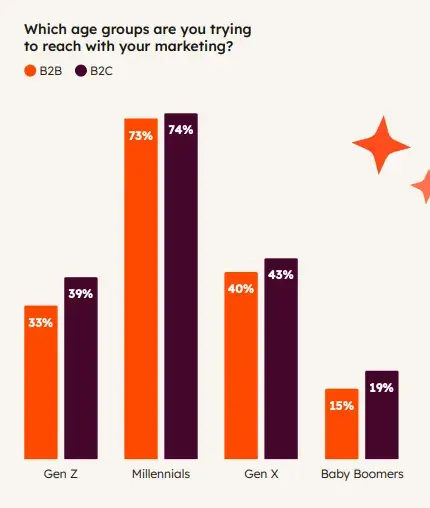
I think the decline in Gen X-focused marketing is particularly interesting. Gen X is oftentimes noted as a “lost generation,” especially when it comes to marketing.
Essentially, they’re a tough marketing nut to crack. Yet, Gen X holds roughly $37.8 trillion in U.S. wealth — roughly half of what Boomers have amassed but triple Millennials’ holdings.
While marketers pursue younger audiences more vigorously, abandoning efforts with Gen X feels premature. If this decrease in Gen X marketing continues, I might consider what strategic opportunities other marketers are surrendering — and how I could take advantage of that shift.
2. What’s old is new again: Brand-led marketing returns.
Buyers want a brand behind the product or service they’re purchasing. That’s proving equally true in B2B marketing as it is in B2C.
Over the past few years, it felt like brand took a back seat to other strategies — but no more. We were already seeing marketers put more emphasis on their brand, ensuring buyers get meaningful content and a unified experience across platforms. They’re doubling down on these efforts in 2025.
Specifically, brand awareness is a target of increased investment for B2B marketers. You want to get into the minds of your buyers and potential buyers.
There’s value in being “the name” in your space, and it’s proving worthwhile from a marketing perspective alongside investments in stalwart tactics like SEO, paid and organic social media content, and video marketing.

The State of Marketing in 2025
HubSpot's Annual Inbound Marketing Trends Report
- Top Marketing Channels
- AI in Marketing
- Managing Privacy
- The Future of Marketing
Download Free
All fields are required.

3. Brands wear their values on their content sleeves.
Younger generations get very attached to their brands. While that can certainly be a boon for a marketing team, it’s really a double-edged sword. More socially conscious customers seek brands that align with their values.
As these folks move into buying positions in companies, they’ll bring that value alignment goal to their buying processes.
As such, you should pay more attention to how your content clicks with your customers’ values. It was important in 2024, and it’ll continue being important in 2025. Start by defining what your brand’s values are, and then you can create content reflecting those values.
Expert Insights: Where Gen Z and Brand Values Collide
Andi Robinson, content strategist at Hijinx Marketing, shares more on why it’s worth showcasing your brand’s values.
“Millennials and Gen Z are two of the most brand-loyal generations,” she said.
“They find brands they love that align with their values, and they not only stick with them but promote them on social media and encourage their friends to purchase from those brands. Brands that target these groups quickly learn the power of that connection.”
There’s a risk to sharing brand values, as being vulnerable can potentially invite scrutiny upon your company and your marketing work. But, saying nothing is also a choice — and it’s one that younger generations simply won’t stand for.
4. Brand storytelling goes visual-first.
Younger customers crave visual marketing content.
They are heavily invested in pictures and video content: Instagram, YouTube, and TikTok are Gen Z’s favorite social media platforms by a significant margin. So, it makes sense that marketers would shift their media strategies to compensate.
These younger audiences are also still human and want to feel connected with what they buy and who they buy it from. That’s where visual storytelling comes into play. Short-form video, images, and live-streaming video content are becoming increasingly important in a healthy marketing mix. Our research found that marketing leaders are investing more in these channels, especially as they’ve shown higher ROI than more legacy content marketing options.
![b2b marketing, content format chart comparison]](https://53.fs1.hubspotusercontent-na1.net/hubfs/53/b2b-marketing-10-20250205-8505565.webp)
Surveyed marketers share that they’re focused on those popular Gen Z channels for B2B content. They’re committing more resources to YouTube, Instagram, and TikTok to use visual storytelling as a means to appeal to business buyers.
Expert Insights: B2B Buyers Want Meaningful Stories
Kate Gahimer, marketing director at Five Four Partners, sees the influence that visual storytelling can have on B2B buyers.
“B2B marketing isn’t about selling — it’s about connecting through stories that matter,” she said.
“At FiveFour, we use customer-centric visuals — like infographics and case studies — to turn challenges into solutions and wins into trust. This is marketing that builds relationships, not just transactions.”
B2B marketing relies heavily on building meaningful relationships. When 90% of B2B buyers say online content has a moderate to major effect on purchasing decisions, lean on visual content to reinforce relationships online and connect with buyers.
While this isn’t necessarily B2B, I think of this Volvo ad when I think of powerful visual storytelling. It’s twice as long as best practices say it should be. In fact, the ad broke many advertising “rules.”
But it’s been one of Volvo’s most successful ads ever because it told a story worth telling. And it was one that people latched onto and loved.
When you’re told to think about “authentic” or “meaningful” storytelling, I’d point you to an ad like Volvo’s. How does your product or service touch the lives of others? What fascinating, rule-breaking angle can you take?
5. Niche influencers become a key B2B channel.
Influencers have felt like a B2C thing for a long time. We’re starting to see that change, albeit slowly. Research shows that 94% of marketers believe influencer marketing has a vital role in B2B marketing. But, only 24% of those marketers have invested in a real influencer strategy.
Our research shows that influencer marketing will become increasingly important heading into 2025. As companies return to brand-led strategies, marketers want to build and reinforce trust and loyalty with their buyers. The right influencers can deliver on that desire.
A creator’s size of influence is also important — but bigger isn’t better. In fact, influencers with fewer than 100,000 subscribers are more helpful for B2B influencer marketing than their larger counterparts.
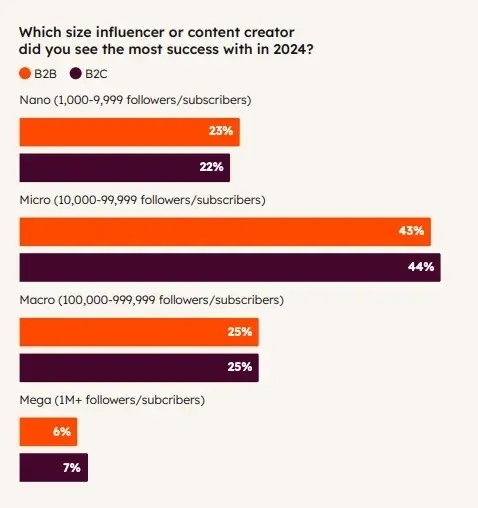
Some of the benefits of smaller influencers were tied to lower costs of market entry. However, nearly half of marketers noted that smaller influencers seemed more trusted by followers and subscribers.
Smaller influencers also opened doors to more niche, tight-knit communities. This reflects a growing trend toward brand-led creator communities to reach smaller, more homogenous audiences.
I think this trend is worth watching, especially as larger social networks get more expensive and difficult to compete on.
6. Marketing teams are hiring for a content-rich future — especially on social media.
Marketers have said “content is king” since 1974, yet it feels even more true today. Brand-led strategies rely on high-quality content and expansive production and distribution models to reach and influence buyers. Marketing teams need team members well-versed in the nuances of content to meet that demand.
That’s what we’re seeing in our survey data. Even as marketing budgets remain in flux after a significant budget downturn in 2024, you can expect teams to find resources for content-related roles in 2025. Creators, coordinators, and strategists — especially on social media — all play key roles in content plans and are in high demand.

Contract or freelance talent will play an important role in this content-led future, too. Surveys from Robert Half found that 58% of marketing managers plan to increase their contract spends in 2025. Even if marketing leaders can’t afford full-time hires, the pressure to produce, distribute, and manage brand-led content will force compromises throughout marketing budgets.
7. AI is helping marketers keep pace with increasing content needs.
AI has been included in marketing tools for years — just typically under a different name, like “automation” or chatbots. But, AI surged to the forefront of marketing discussions when OpenAI launched ChatGPT for public consumption in November 2022.
As ChatGPT and its multiple competitors refined their models and sought deeper integrations into tech stacks, marketers noticed opportunities.
A brand-led marketing future that relies on content (and visual content, particularly) sounds like an incredible amount of work. And, despite more content hires in the coming months, teams still need to get that work done.
AI, and generative AI in particular, has ridden to the rescue. 2024 saw AI use among marketers rise at a staggering rate.
AI’s ability to produce or support written content made it increasingly important to marketers’ daily operations: over 43% of surveyed marketers say they’ve used AI to create content, the top AI use case.
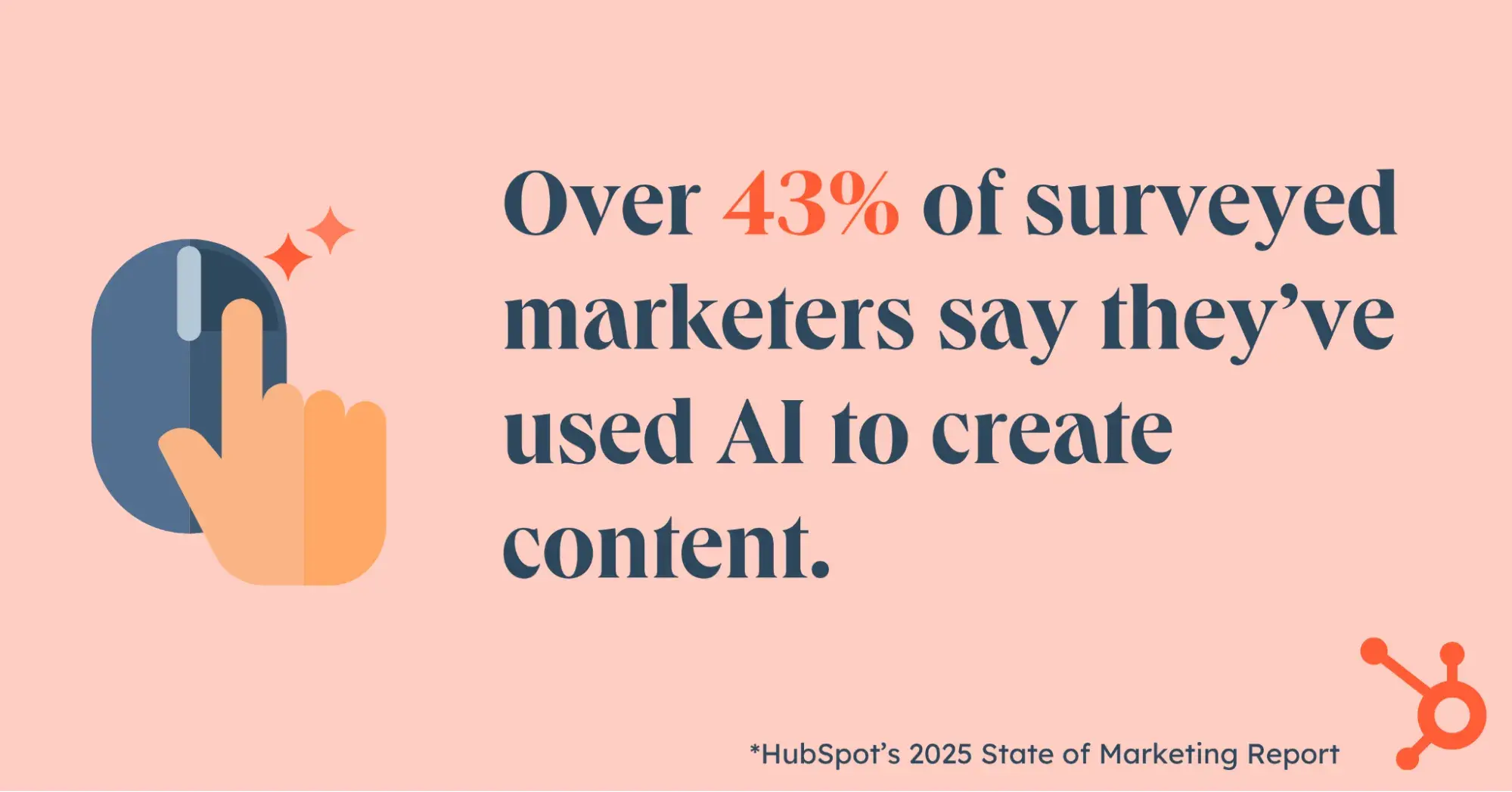
In 2025, our research shows that marketers plan to leverage AI to turn text into multimodal campaigns. This content repurposing has you transform content from one form factor to another, like a blog into an AI-generated audio podcast or a script for a video.
Doing so manually is incredibly time-consuming and burns through a lot of team resources. Repurposing can also help marketing leaders meet one of their top goals: personalizing content at scale. AI is now well-positioned to conduct content repurposing, and marketers in general are ready to embrace it.
Automation will also reappear as “agentic AI” to autonomously operate some marketing functions and free up time for other activities. Rather than generate content based on user input, agentic AI can analyze data, devise strategies, and operate on its own to achieve goals. About 20% of our surveyed marketers say they plan to explore and deploy agentic AI in 2025.
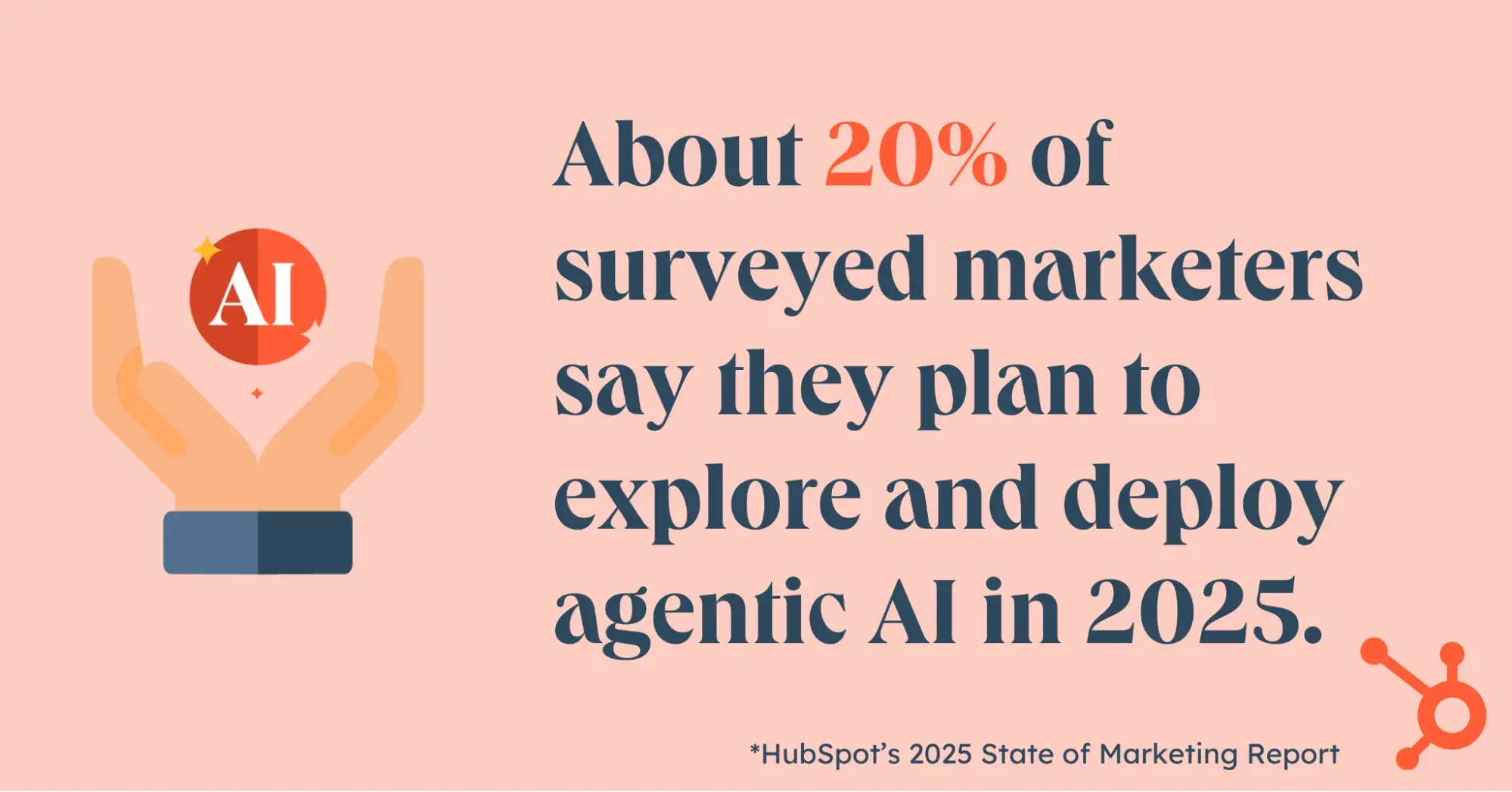
Despite AI’s promise, many questions still swirl about what an AI-driven marketing strategy looks like — and how to show it’s worth the money. Roughly 47% of surveyed marketers said they agree they have a clear understanding of AI’s role in their strategies and that they can measure AI’s impact accurately.
We’ll see how this pairs with an expected enterprise AI spend growth of 5.7% in 2025 despite flattening IT budgets. Marketers who speak the language of AI ROI could find a very interesting space for themselves and their teams.
B2B Marketing Examples
A B2B marketing approach that works for one business may not work for another, but that’s not to say we can’t learn something from the pros.
Here are some B2B marketing examples of businesses that do it right.
1. Social Media Marketing: Adobe
TikTok can seem like a difficult platform to stand out as a B2B brand, but some companies have managed to attract thousands — if not millions — of viewers to their videos through high-quality content and an understanding of the app.
Take software company Adobe, which has 262.3K followers and 2 million likes on its TikTok account.
When Adobe first joined the app, the company's second video got over 2 million views. The video asked its audience, Who is a creative TikToker we should know about? This encouraged high audience engagement.
Adobe succeeds on the app because it creates engaging content specifically catered to TikTok‘s audience. All of Adobe’s videos are short, entertaining, and easily digestible.
Take the following example, which has over 370K views and highlights how user @emilesam used Adobe's After Effects edit to create a fighting sequence against himself.
@adobe May the force be with @emilesam in his #AfterEffects edit. ✨ #Adobe #foryoupage #fyp #foryoup
♬ original sound - Adobe
The brand does a good job highlighting its products in a fun, non-promotional way.
Both consumers and businesses can see a clear connection between using Adobe's products and finding success on TikTok — which makes this a great example of B2B marketing.
2. Content Marketing: Shopify
Ecommerce company Shopify produces many different types of content resources, such as a blog, business courses, and community events.
But one content avenue that helps the brand stand out is its podcast, aptly titled “Shopify Masters: The ecommerce business and marketing podcast for ambitious entrepreneurs.”
The podcast focuses on inspirational stories from entrepreneurs and offers practical tips for starting an online business on Shopify.
Episode topics range from “Disrupting the Soda Industry with a Healthy Spin” to “How Masks For Dogs Landed a Deal on Shark Tank.”
Offering so much valuable, interesting content for free is a fantastic example of effective B2B marketing, which should always provide value before it tries to extract it.
3. Digital Marketing: Mailchimp
Mailchimp's homepage is easy to navigate and focuses entirely on its customers' pain points.
Consider, for instance, the first large text you see when you click on the page: “Turn Emails & SMS into Revenue.”
Below are four separate options that show how Mailchimp directly addresses a business’s needs. The language focuses on the customer and how Mailchimp can help the customer reach their goal: To grow their businesses.
Ultimately, the company demonstrates how much it values each customer by tailoring each piece of content toward its customers' unique challenges.
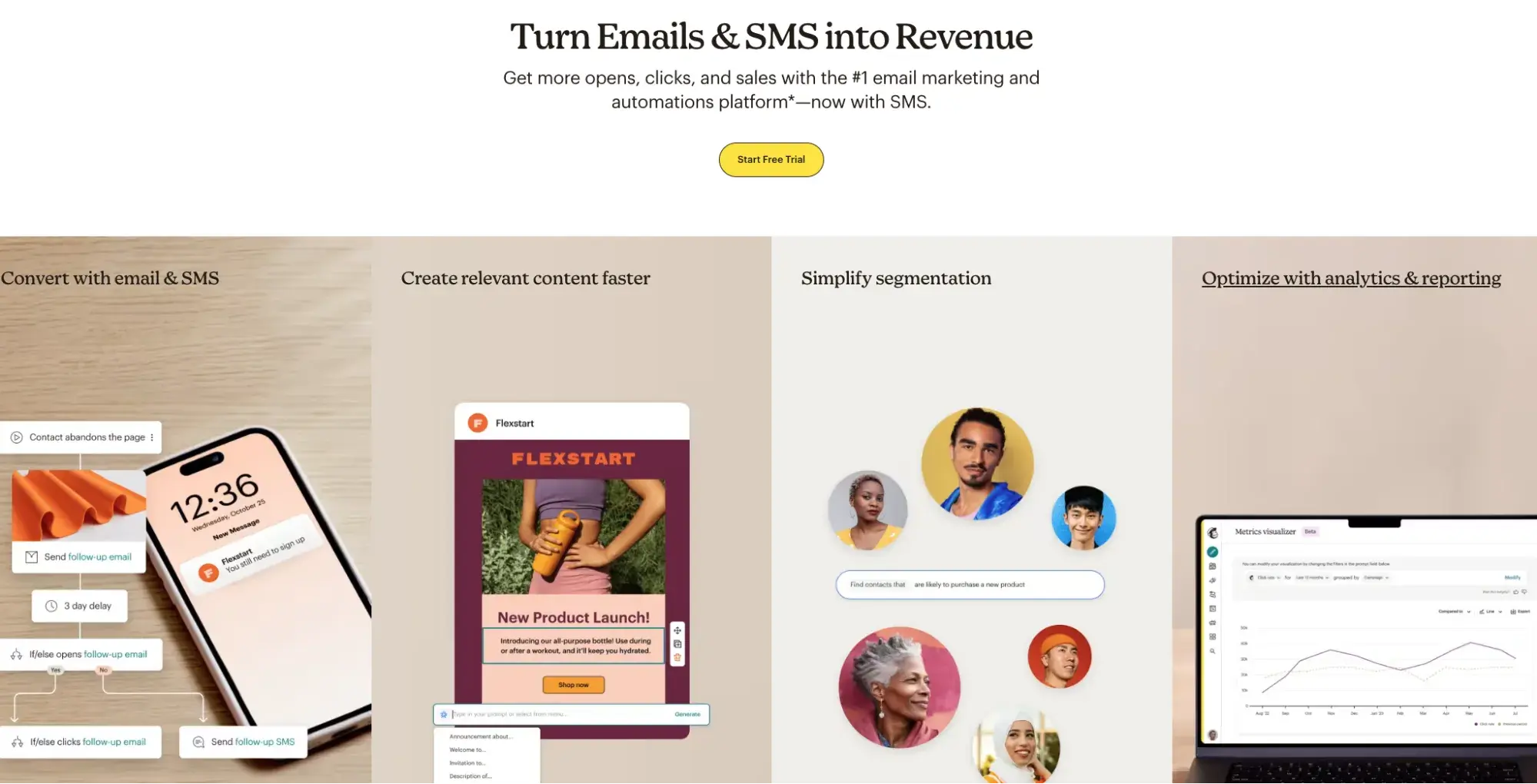
4. Client Testimonials: Venngage
Venngage took its positive client testimonials and sprinkled them throughout its website.
This social proof lets prospects know that you have a track record of reliability and have delighted previous customers beyond expectation.
Not only that, but sharing testimonials can also have a big impact on potential consumers in the consideration and decision stages.

5. B2B SEO: TravelPerk, Google
A B2B buyer spends 27% of the time in the purchase journey independently researching online, potentially using at least one search engine during the online research.
It’s worth the time and money to invest in making sure other businesses can find you with ease.
TravelPerk displays a diverse range of paid search and SEO. An impressive SEO strategy is its use of topic clusters and sub-topics to reach its target audience.
TravelPerk ensures that search engine pages like “business travel expenses” have a paid ad leading to its website or high-ranking blog content providing information travelers are looking for.
6. Inside Influence Marketing: IBM, Influencer and Employee Advocacy Program
IBM Systems business group has seen the growing importance of employee voice and the rise of employee influencers as a strategy in B2B marketing.
In the words of Ryan Bares, global social programs lead, he states, “In the B2B marketing world, we’ve all come to understand that buyers trust individual voices more than formal marketing and advertising messages, so finding ways to optimize influence internally is becoming a key area of focus.”

Leveraging employees in your company who have an affinity for the industry, as well as vast knowledge of trending topics and your brand, could be key to building new relationships in the industry.
7. B2B Referral Program: Blackbaud, Blackbaud Champions
Blackbaud offers an incredible B2B referral program that incentivizes current customers to become product advocates — Blackbaud Champions.
Champions are encouraged to share their insight into how the implementation process works, what it’s like to work with the team, and how Blackbaud solutions have helped you advance their mission.
When you share your experiences, the brand will reward you with benefits.
By providing your feedback and participating in case studies you’ll earn Reward Points in the Blackbaud Champions Hub, which you can redeem from the Champions Rewards.
These points are what Champions strive to redeem, as they include incentives like discounts, complimentary passes, gift cards, VIP experiences, and more.

Referral programs are a great way to kindle customer loyalty and have advocates spread the word about your business through the network.
Invest in B2B Marketing and Reach Your Business Customers
Marketing isn’t effective unless you keep your audience in mind, and no other audience is as fickle and critical as business customers.
Your marketing should communicate how your business can help theirs, and if it doesn’t, you can redirect your B2B marketing strategies to reach them.
Editor's note: This post was originally published in July 2019 and has been updated for comprehensiveness.
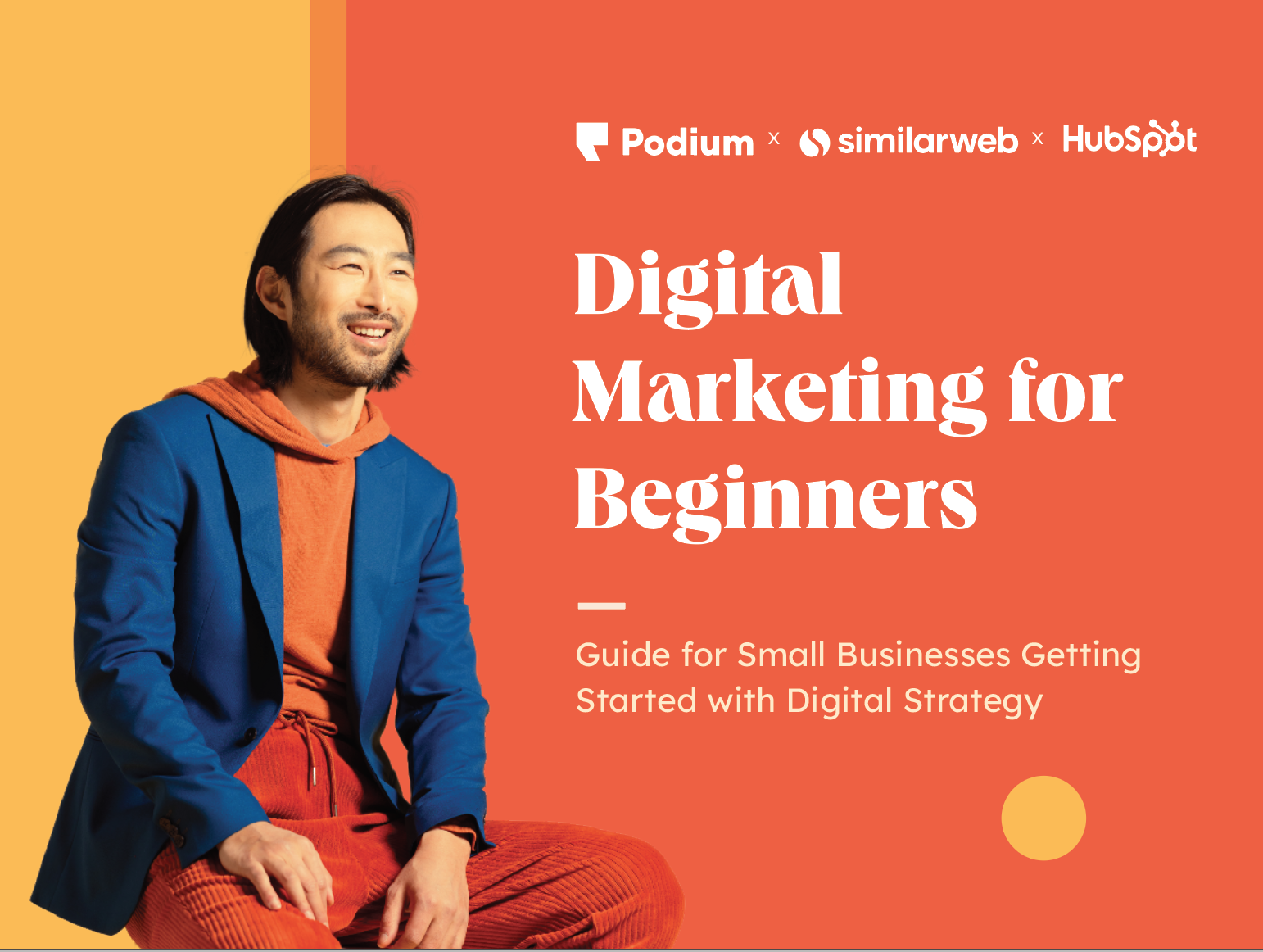
Digital Marketing For Small Business
Everything you need to know to get started with digital marketing. You'll learn about:
- SEO
- Content Marketing
- Marketing Analytics
- And More!
Download Free
All fields are required.

B2B Marketing


![→ Download Now: Free Product Marketing Kit [Free Templates]](https://no-cache.hubspot.com/cta/default/53/08b5e1f4-5d26-405b-b986-29c99bd0cb14.png)
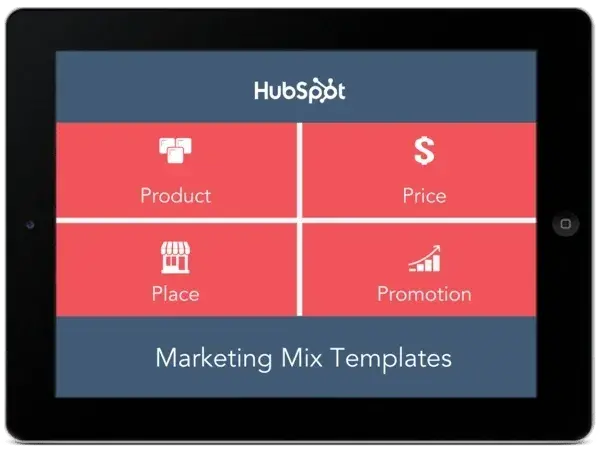
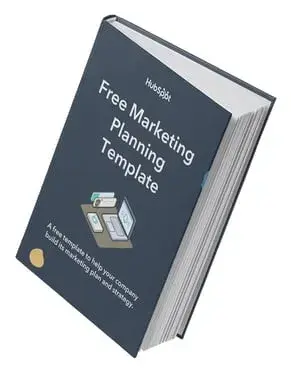
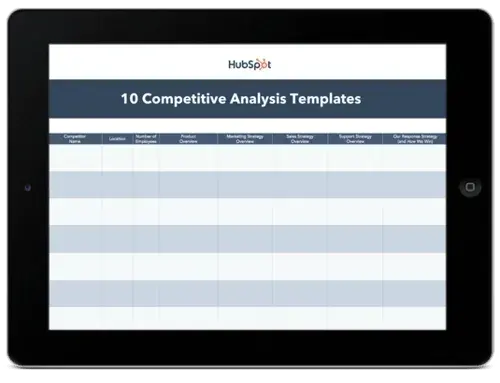





.png)
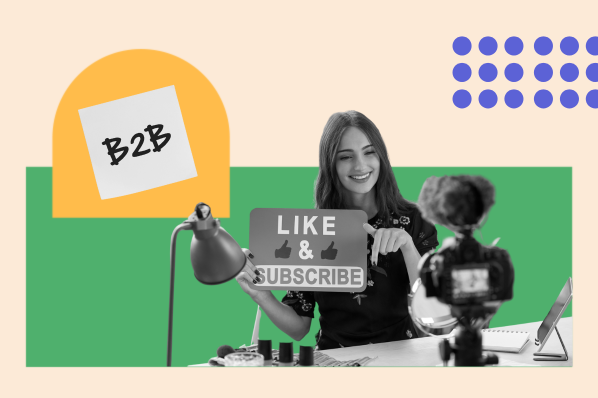

![48 B2B Marketing Stats to Know This Year [+HubSpot Data]](https://53.fs1.hubspotusercontent-na1.net/hubfs/53/b2b%20marketing%20stats.png)

